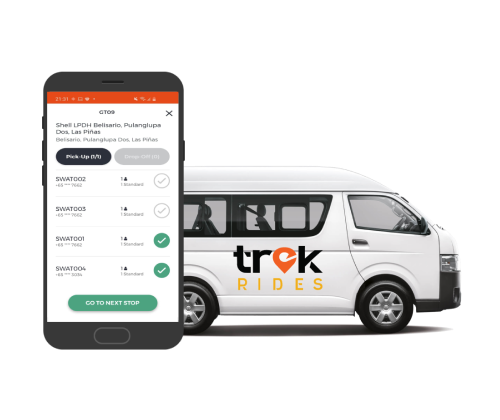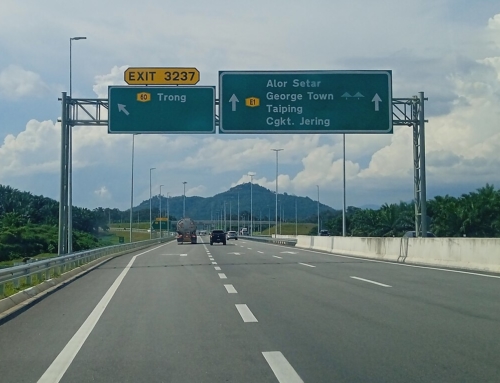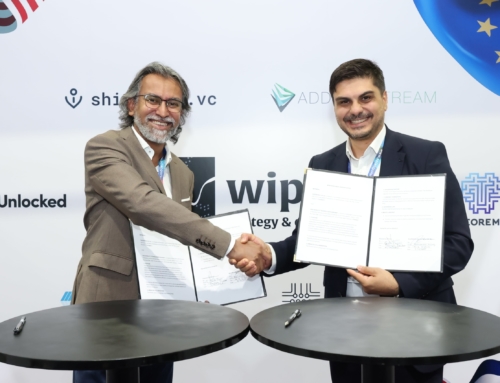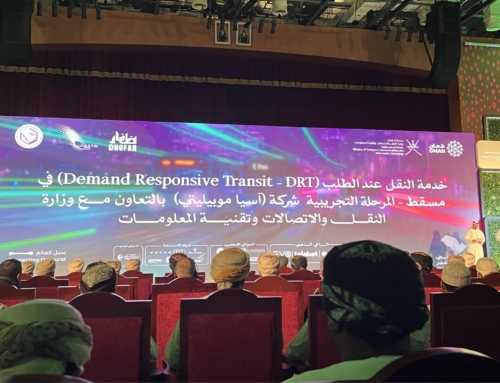Challenges abound for the transit sector but there are strategies that can be implemented to address them
As we’ve just celebrated our 65th Merdeka Day last month and are about to celebrate Malaysia Day this week, my thoughts turn to how Malaysia is coping with mobility and transit challenges for the years to come.
We’ve made much progress as a nation but one of our major Achilles Heels must be our transportation system. Fact is these failures didn’t happen overnight. Some have argued that the Covid-19 pandemic has brought about the challenges facing our transportation system, but this isn’t true.
The weaknesses were already long in existence, but the pandemic has certainly heightened our perception of the inefficiencies and the need for better ways to deal with it.
The Malaysian government’s 12th Malaysia plan identified three weaknesses in the public transport system. These include inadequate first- and last-mile connectivity between modes of transport; the absence of holistic travel demand management that has affected the efficiency and reliability of public transport; and the reluctance to switch from private vehicles to public transport, which is attributed to the relatively low cost of car ownership.
Changing commuters’ attitudes towards public transport is going to be a major challenge. That said, there are strategies that we can implement to move the needle and these solutions are rooted in the use of technology and data.
Examining root causes
The severe lack of reliable and affordable first- and last-mile solutions for commuters is arguably the biggest stumbling block to increasing public transportation utilisation in Malaysia, as many other challenges stem from here.
For example, while the country’s LRT and MRT services are fairly adequately developed, commuters struggle to get to them with the common problem of accessibility – being too far to walk and lack of park-and-ride facilities – among others.
Increasing the number and frequency of feeder buses is extremely costly and current riderships on these buses do not justify this move. Merely having GPS trackers or telematics on board the buses without journey planning capabilities are not helpful to commuters. First- and last-mile services are inherently part of a multimodal journey that requires commuters to transfer to/from a middle-mile service.
Personalised updates and notifications for trip delays, service interruptions and cancellations are critical features for commuters to make real-time modifications to their travel plans. Not having these features will discourage commuters from completing their journeys using public transportation.
The absence of holistic travel demand management means that each mode of transport in Klang Valley is planned and operated independently with hardly any integration between the modes. A commuter wanting to travel into the city loathes to do so because he/she cannot visualise their entire multimodal journey.
While one can use Google Maps to plan one’s journey, the app is optimised more as a turn-by-turn navigation tool for drivers rather than as a comprehensive journey planner that encourages multimodal commuting. Google Maps cannot effectively help a commuter complete a multimodal journey with localised information specific to a city.
The solution to this is to implement the concept of mobility-as-a-service (MaaS), which can connect the entire fragmented ecosystem together. MaaS changes the way commuters think about transport as they don’t need to focus on what type of transportation they would use to complete their journeys, such as choosing between driving or taking public transport. Commuters only need to focus on mobility – using any means to complete the journey.
Digitalisation of public transport
In spelling out its remedy for the situation, the 12th Malaysia Plan recommended enhancing first- and last-mile connectivity; integrating transport modes; and encouraging behavioural shift from private to public transportation – all components that MaaS addresses.
Addressing the first- and last-mile problem not only requires making information more available over a variety of channels and to push this information directly to commuters: it requires a radical shift in providing an alternative mode of first- and last mile public transportation.
Ground-based public transport needs to be digital and responsive. Fixed routes and scheduled services need to be replaced with DRT systems, which are vehicles that have the capacity and affordability of a small public shuttle vehicle that services a geofenced localised area but with the convenience and rich features of an e-hailing app. In this way, the service responds to the demands of commuters and benefits them, while DRT transport operators can optimise their operational costs.

DRT is unlike e-hailing as it isn’t a private door-to-door service but a public transit service that affordably serves a larger pool of commuters. At the same time, it has advanced software intelligence that optimises every commuter’s route options and pick-up and destination points, while providing commuters with accurate estimated time of arrival (ETA).
An urban area such as Klang Valley can be served by having many DRT service zones, each serving as first-mile/last-mile zones connecting commuters in a cluster of neighbourhoods nearest to LRT/MRT/bus stations. DRT is a cost-effective first and last-mile solution that will increase ridership of the middle-mile public transit lines.
To address the holistic travel management challenge, our transportation systems need to be fully digitised and connected to the Internet. There are some companies that have built their own “journey planning” apps, but functions more as a vehicle tracker instead. These apps tell you where to wait for the bus/train and when it is expected to arrive. It however does not help you plan your journey end-to-end, door-to-door.
A journey planning app is connected to cloud services with the computational intelligence to provide comprehensive journey planning capabilities, ability to connect multiple modes of transportation together, and offers seamless payment methods and ticketing options.
A true journey planner places the travel needs of the commuter in the centre of his/her experience, rather than in the vehicle they use. It is also service provider agnostic as much as possible and provides as many options as reasonably and accurately as possible for the commuter’s selection.
It can comprise DRT services, buses, trains, electric scooters, taxis, and even e-hailing rides – from competing companies. Having these different modes of transport on a single platform will encourage commuters to complete their journeys using multimodal public transportation and promote MaaS.
Completing the puzzle is the use of account-based ticketing (ABT) systems for public transit. Ticketing systems today aren’t intelligent enough to assign different profiles for different commuter types. For example, a prepaid, flat-rate, unlimited ride ticket only benefits frequent users as opposed to infrequent users, who still have to pay the same rate but cannot get their full money’s worth.
ABT can address such challenges and change usage behaviour because its fare structure isn’t tied to a particular ticket but rather to an electronic wallet (e-wallet) account a commuter has. Commuters using ABT do not have to pre-pay upfront everytime he/she travels but their accounts are instead recorded and deducted, as and when they are used.
This allows for structured profiles to be designed for a wide-variety of commuters. A senior citizen can be incentivised to ride a train by being charged half price all the time; a daily office commuter can get 30% off his/her 11th trip onwards after commuting 10 trips; or a “park and ride” user could be given 20% everytime he/she use a train or bus service – all this without having to pre-pay upfront.
In this way, commuters have a real compelling cost-benefit reason to change their travel behaviour.
Looking forward
We need long-term solutions that can effectively tackle the root of these problems – solutions that involve a multi-stakeholder approach that brings together the government, transport operators, technology providers, and the public for the greater good.
We’ve outlined some of the new technologies today – DRT, multimodal journey planner and ABT – that can be applied to today’s transportation challenges. We believe that if we can begin to address these challenges, commuters will be incentivised towards utilising public transportation.
Still, the urban transport policy direction should be geared to be multimodal-centric – to reward commuters and transport operators that utilise a combination of private and public transit in order to reduce vehicles on the road while increasing overall public transport modal share.
Lastly, the total cost of owning a private vehicle requires much-needed advocacy and exposure in order to encourage a habitual shift towards multimodal public transportation. The opportunity cost of sitting in traffic and having fuel burnt; the wear and tear a car experiences in traffic; and the high cost of parking and toll payments are all negative factors that can’t be good in the long run.
As we celebrate Merdeka and Malaysia Day, we need to move forward from the challenges we face today in the transportation sector. We can and we should use technology and data to jumpstart the reformation needed for the sustainability of our cities.
Share This Story!
RELATED POSTS
Challenges abound for the transit sector but there are strategies that can be implemented to address them
As we’ve just celebrated our 65th Merdeka Day last month and are about to celebrate Malaysia Day this week, my thoughts turn to how Malaysia is coping with mobility and transit challenges for the years to come.
We’ve made much progress as a nation but one of our major Achilles Heels must be our transportation system. Fact is these failures didn’t happen overnight. Some have argued that the Covid-19 pandemic has brought about the challenges facing our transportation system, but this isn’t true.
The weaknesses were already long in existence, but the pandemic has certainly heightened our perception of the inefficiencies and the need for better ways to deal with it.
The Malaysian government’s 12th Malaysia plan identified three weaknesses in the public transport system. These include inadequate first- and last-mile connectivity between modes of transport; the absence of holistic travel demand management that has affected the efficiency and reliability of public transport; and the reluctance to switch from private vehicles to public transport, which is attributed to the relatively low cost of car ownership.
Changing commuters’ attitudes towards public transport is going to be a major challenge. That said, there are strategies that we can implement to move the needle and these solutions are rooted in the use of technology and data.
Examining root causes
The severe lack of reliable and affordable first- and last-mile solutions for commuters is arguably the biggest stumbling block to increasing public transportation utilisation in Malaysia, as many other challenges stem from here.
For example, while the country’s LRT and MRT services are fairly adequately developed, commuters struggle to get to them with the common problem of accessibility – being too far to walk and lack of park-and-ride facilities – among others.
Increasing the number and frequency of feeder buses is extremely costly and current riderships on these buses do not justify this move. Merely having GPS trackers or telematics on board the buses without journey planning capabilities are not helpful to commuters. First- and last-mile services are inherently part of a multimodal journey that requires commuters to transfer to/from a middle-mile service.
Personalised updates and notifications for trip delays, service interruptions and cancellations are critical features for commuters to make real-time modifications to their travel plans. Not having these features will discourage commuters from completing their journeys using public transportation.
The absence of holistic travel demand management means that each mode of transport in Klang Valley is planned and operated independently with hardly any integration between the modes. A commuter wanting to travel into the city loathes to do so because he/she cannot visualise their entire multimodal journey.
While one can use Google Maps to plan one’s journey, the app is optimised more as a turn-by-turn navigation tool for drivers rather than as a comprehensive journey planner that encourages multimodal commuting. Google Maps cannot effectively help a commuter complete a multimodal journey with localised information specific to a city.
The solution to this is to implement the concept of mobility-as-a-service (MaaS), which can connect the entire fragmented ecosystem together. MaaS changes the way commuters think about transport as they don’t need to focus on what type of transportation they would use to complete their journeys, such as choosing between driving or taking public transport. Commuters only need to focus on mobility – using any means to complete the journey.
Digitalisation of public transport
In spelling out its remedy for the situation, the 12th Malaysia Plan recommended enhancing first- and last-mile connectivity; integrating transport modes; and encouraging behavioural shift from private to public transportation – all components that MaaS addresses.
Addressing the first- and last-mile problem not only requires making information more available over a variety of channels and to push this information directly to commuters: it requires a radical shift in providing an alternative mode of first- and last mile public transportation.
Ground-based public transport needs to be digital and responsive. Fixed routes and scheduled services need to be replaced with DRT systems, which are vehicles that have the capacity and affordability of a small public shuttle vehicle that services a geofenced localised area but with the convenience and rich features of an e-hailing app. In this way, the service responds to the demands of commuters and benefits them, while DRT transport operators can optimise their operational costs.

DRT is unlike e-hailing as it isn’t a private door-to-door service but a public transit service that affordably serves a larger pool of commuters. At the same time, it has advanced software intelligence that optimises every commuter’s route options and pick-up and destination points, while providing commuters with accurate estimated time of arrival (ETA).
An urban area such as Klang Valley can be served by having many DRT service zones, each serving as first-mile/last-mile zones connecting commuters in a cluster of neighbourhoods nearest to LRT/MRT/bus stations. DRT is a cost-effective first and last-mile solution that will increase ridership of the middle-mile public transit lines.
To address the holistic travel management challenge, our transportation systems need to be fully digitised and connected to the Internet. There are some companies that have built their own “journey planning” apps, but functions more as a vehicle tracker instead. These apps tell you where to wait for the bus/train and when it is expected to arrive. It however does not help you plan your journey end-to-end, door-to-door.
A journey planning app is connected to cloud services with the computational intelligence to provide comprehensive journey planning capabilities, ability to connect multiple modes of transportation together, and offers seamless payment methods and ticketing options.
A true journey planner places the travel needs of the commuter in the centre of his/her experience, rather than in the vehicle they use. It is also service provider agnostic as much as possible and provides as many options as reasonably and accurately as possible for the commuter’s selection.
It can comprise DRT services, buses, trains, electric scooters, taxis, and even e-hailing rides – from competing companies. Having these different modes of transport on a single platform will encourage commuters to complete their journeys using multimodal public transportation and promote MaaS.
Completing the puzzle is the use of account-based ticketing (ABT) systems for public transit. Ticketing systems today aren’t intelligent enough to assign different profiles for different commuter types. For example, a prepaid, flat-rate, unlimited ride ticket only benefits frequent users as opposed to infrequent users, who still have to pay the same rate but cannot get their full money’s worth.
ABT can address such challenges and change usage behaviour because its fare structure isn’t tied to a particular ticket but rather to an electronic wallet (e-wallet) account a commuter has. Commuters using ABT do not have to pre-pay upfront everytime he/she travels but their accounts are instead recorded and deducted, as and when they are used.
This allows for structured profiles to be designed for a wide-variety of commuters. A senior citizen can be incentivised to ride a train by being charged half price all the time; a daily office commuter can get 30% off his/her 11th trip onwards after commuting 10 trips; or a “park and ride” user could be given 20% everytime he/she use a train or bus service – all this without having to pre-pay upfront.
In this way, commuters have a real compelling cost-benefit reason to change their travel behaviour.
Looking forward
We need long-term solutions that can effectively tackle the root of these problems – solutions that involve a multi-stakeholder approach that brings together the government, transport operators, technology providers, and the public for the greater good.
We’ve outlined some of the new technologies today – DRT, multimodal journey planner and ABT – that can be applied to today’s transportation challenges. We believe that if we can begin to address these challenges, commuters will be incentivised towards utilising public transportation.
Still, the urban transport policy direction should be geared to be multimodal-centric – to reward commuters and transport operators that utilise a combination of private and public transit in order to reduce vehicles on the road while increasing overall public transport modal share.
Lastly, the total cost of owning a private vehicle requires much-needed advocacy and exposure in order to encourage a habitual shift towards multimodal public transportation. The opportunity cost of sitting in traffic and having fuel burnt; the wear and tear a car experiences in traffic; and the high cost of parking and toll payments are all negative factors that can’t be good in the long run.
As we celebrate Merdeka and Malaysia Day, we need to move forward from the challenges we face today in the transportation sector. We can and we should use technology and data to jumpstart the reformation needed for the sustainability of our cities.



